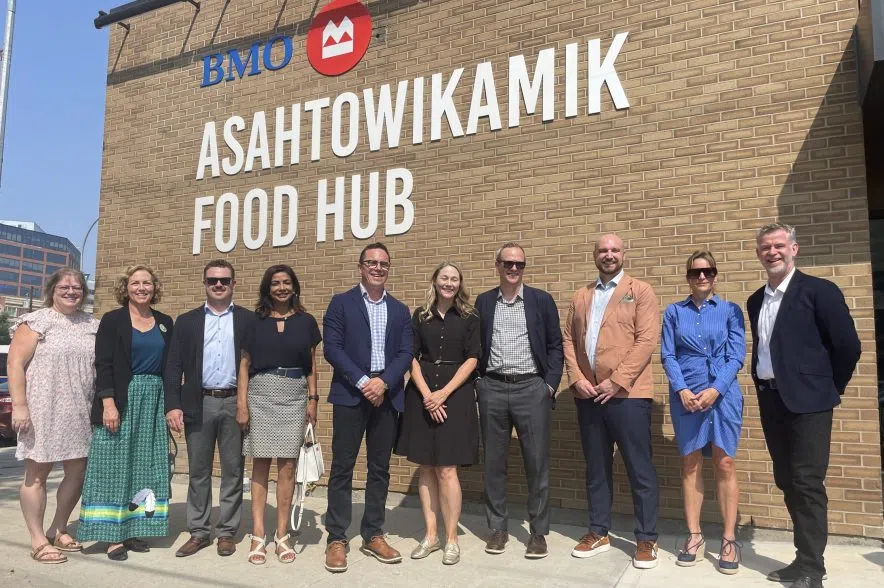The doors are set to open this week for Canada’s first “at-scale” choice model food centre.
The Regina Food Bank is set to officially launch its new Asahtowikamik food hub on Friday at 1881 Broad St.
The choice model centre is designed to afford dignity to clients and cut down on food waste.
Food Bank CEO John Bailey said the choice model offers several advantages over the hamper system, including providing a better sense of food security for its clients.
Bailey also said Regina Food Bank will perform more expansions in the future.
“What this space will allow us to do is serve about 25 per cent more people in our community,” he said at a media event on Thursday.
“We always talk about this idea that no food bank wants to get bigger, and that’s 100% true. That being said, the needs of our community are dictating that we do need to keep expanding our services.”
Bailey said the food bank served about 19,947 people in the community through roughly 204,000 points of service.
However, he said there is still about a 30 to 40 per cent gap between what the service needed by the community and what the food bank is able to serve.
Bailey also said about 39 per cent of people served by Regina Food Bank are children and youths.
“This is going to be a big step forward for us in terms of meeting that need and that’s really important to us,” he said.
“And to be able to do it in a way that changes the dynamic of what that service looks like for the folks who receive it is really important to us.”
The food bank is still using its Winnipeg Street location and it is not reducing the size of the hampers it delivers.
Bailey said the goal of the new hub wasn’t to cut costs but instead to ensure the food bank can spend its money more appropriately which can be done with the choice model.
“Folks have the ability to say what they want, and in some cases, more importantly, what they don’t want,” Bailey said.
“If we spend $200,000 a year, say, on bell peppers because we think bell peppers are a great product; well, the folks we’re serving can’t use it. We should be spending it on a different produce product that they will use.”
How it works
When people walk through the doors of the Asahtowikamik, they’ll be met by a staff member or volunteer who will help them if they have an appointment or help set up an appointment for them.
After that, clients will receive a blank shopping list that gives a sense of how much of an item someone can get.
If the centre doesn’t have spots open on a particular day, Bailey said staff will help redirect people to places that can provide a meal or bulk product.
The products are free but they get checked out by a scanner system designed to help the food bank take inventory and figure out where demand lies for each product.
— With files from 980 CJME’s Gillian Massie













